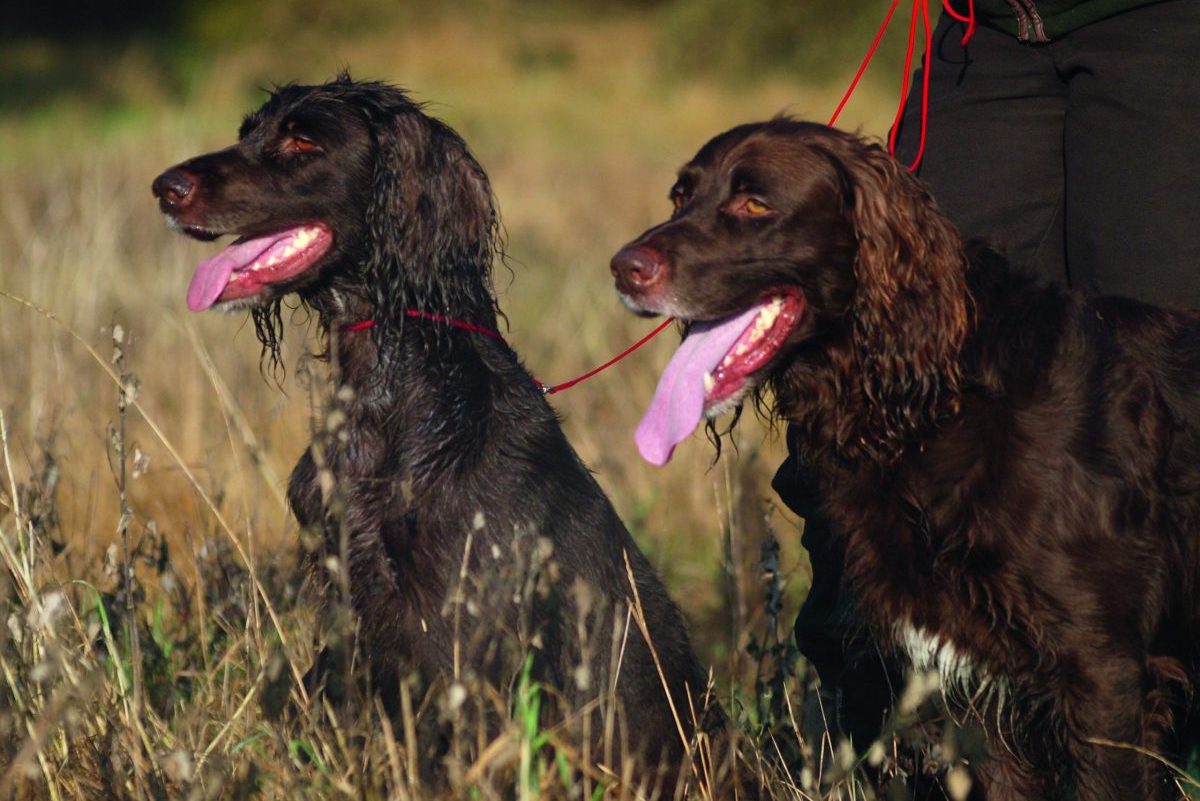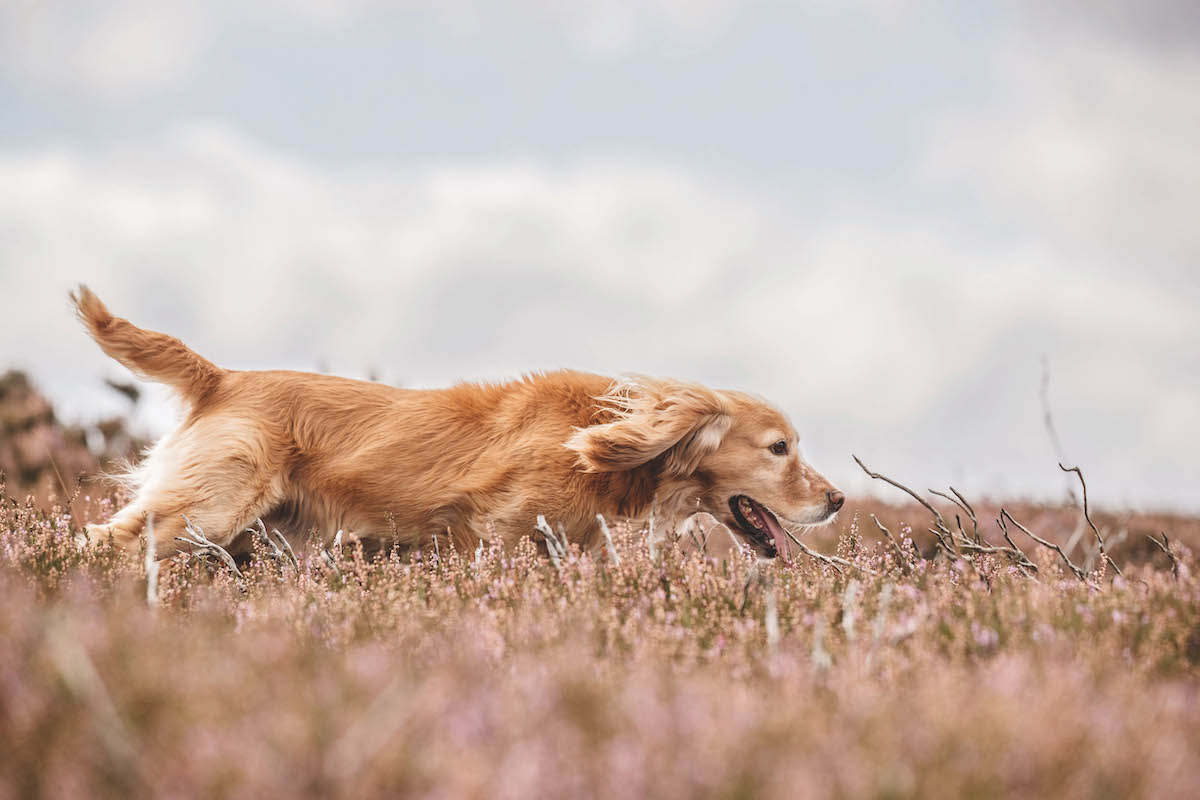Why hasn’t the German longhaired pointer caught on?
David Tomlinson investigates why the German longhaired pointer hasn’t caught on, with the wirehaired vizsla a more popular choice

German longhaired pointers are good-looking dogs with top-quality ability in the shooting field
It’s nearly 25 years since I shot my first pheasant off a point. Shooting birds over pointing dogs may not be particularly challenging, as the shot is often quite simple, but as anyone who has tried it will confirm, it’s still awfully easy to miss. The real challenge and satisfaction comes from the hunt itself: watching the dog work the ground, seeing how it handles the scent, then enjoying the excitement as it locks on to the point. There’s always the thrill of the flush itself, followed, hopefully, by a satisfying retrieve.
Through I’ve been out on the moors with both pointers and setters, I’ve never had the good fortune to carry a gun on such occasions — I’ve always been armed with my camera. Shooting grouse over pointing dogs may be the purest shooting sport there is, but lowland shooting over HPRs is not a bad substitute at all, as my own experience confirms.
Memorable shooting
My first time shooting over pointers was memorable not just for bagging my pheasant, but the dogs I was shooting over. They were German longhaired pointers (GLP), at the time rare dogs in the UK, but a breed that I predicted had a bright future here. Time has proven me wrong, though I still wonder why.
The most elegant and setter-like of the German pointers, the stylish German longhaired pointer has enjoyed considerable success in trials in the UK. However, despite its attractive looks and undoubted ability in the shooting field, the breed remains a rarity here: only 13 puppies were registered by the Kennel Club in 2022, up from zero the year before. Its lack of popularity is puzzling, as it is an accomplished all-rounder.
Some years ago, I asked leading HPR trainer Rory Major about GLPs, and why they have failed to become established as shooting dogs in the UK. Rory replied: “These are tremendously exciting dogs and are relatively simple to train. They are great game-finders, and they remind me of a setter but with a touch of HPR. I don’t understand why they haven’t caught on. I had one once and she was everything I wanted, but sadly she proved to be gun-shy so she went to a falconer. I’d have another one like a shot but I’ve got too many dogs. They are good all-rounders and will have a go at everything.”
The German Longhaired Pointer Club was formed in 1996, two years after the first dogs had been imported into the UK. In 1997, the breed was accepted by the Kennel Club (KC) on to the import register, and two years later the KC registered the breed club.
Though the GLP is naturally a rather showy, good-looking dog, the original aim of the German Longhaired Pointer Club was to promote the breed as a working gundog. Further imports of dogs were made from Germany, the Netherlands and Ireland, and by 2004 the club boasted of no fewer than 14 different bloodlines (German and Dutch lines are quite different).
Yet despite making their mark in field trials (Suffolk-based vet Rob Gould campaigned his Wamilanghaar dogs with notable success, as did David and Eileen Windsor with their Questor kennel), the breed has never caught on. In 2014, Howard Kirby won the HPR Championship with his German longhaired pointer, Wamilanghaar Tash (Tashi), but even this victory did little to boost the breed’s popularity.
It’s interesting to contrast the GLP with the Hungarian wirehaired vizsla (HWV), another HPR that was initially imported into Britain in the 1990s, with the first UK litter in 1992. As with the GLP, the early importers were keen to promote their dogs as workers, rather than pet or show dogs. By the turn of the century, the HWV was still a rare breed. I remember being invited out for a day in Surrey to see these distinctive ginger dogs working for the first time. I came home impressed and wrote about them for this column.

From 2013 to 2022, more than 7,000 Hungarian wirehaired vizsla puppies were registered with the Kennel Club
Similar in size if not appearance, both GLPs and HWVs have been bred to do a similar job. Historically, the German dog is much the senior of the two, having been developed in
the mid-19th century, with the first breed standard written in 1897. In contrast, the HWV is relatively new. It was developed in the 1930s by shooting men who wanted a tougher working dog than the smooth vizsla. Though the latter provided the foundation stock, both German wirehaired pointer and pudelpointer blood was used to establish the breed.
Attention-grabbing
The HWV was recognised by the Fédération Cynologique Internationale (International Canine Federation) in 1963. Unlike the GLP, it was a breed that caught attention. In the 10 years from 2013 to 2022, considerably more than 7,000 puppies have been registered in the UK, compared with just 144 GLPs.
Like the GLP, HWVs have been successful in trialling, with wins in the HPR Championship in 2016, 2017 and 2021, an impressive tally. Rory Major reckons that this is the easiest to train of all the HPR breeds, a worthy recommendation, while I’ve never been disappointed by the HWVs I’ve seen in the shooting field.
However, quite why they have proved to be so much more popular than the GLP, nobody seems able to explain.








